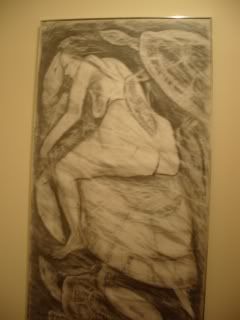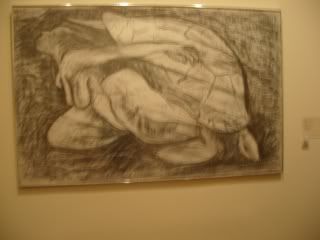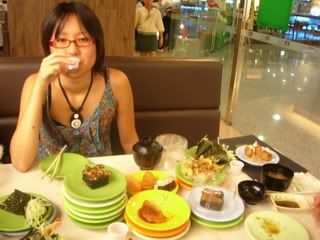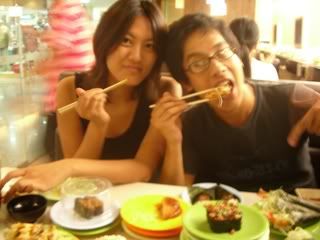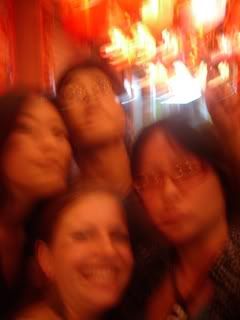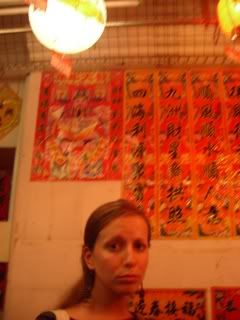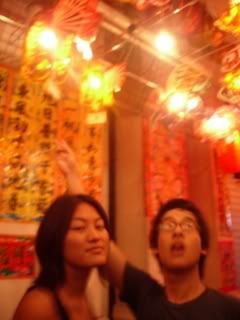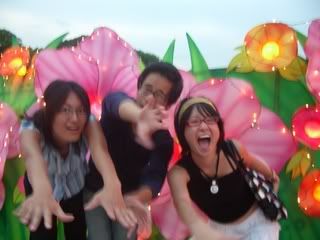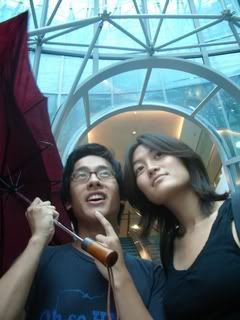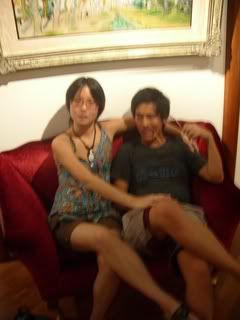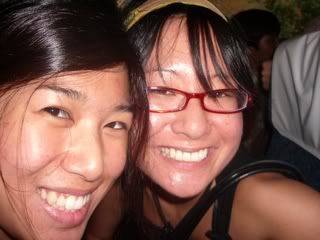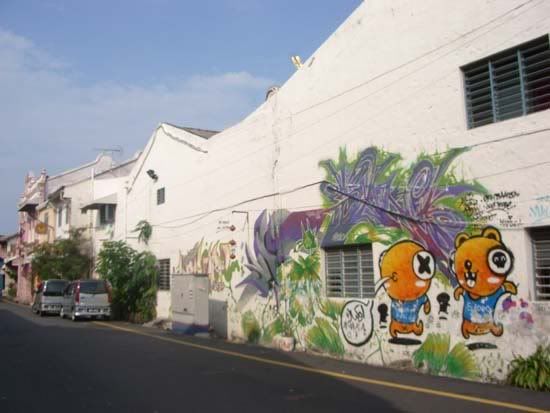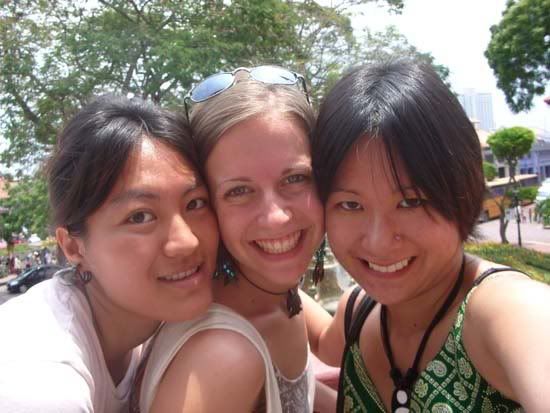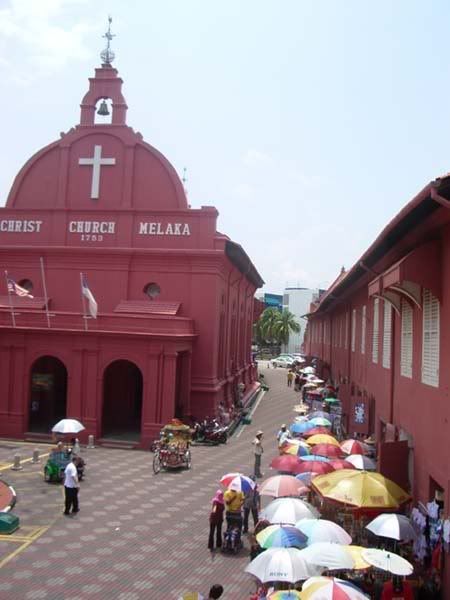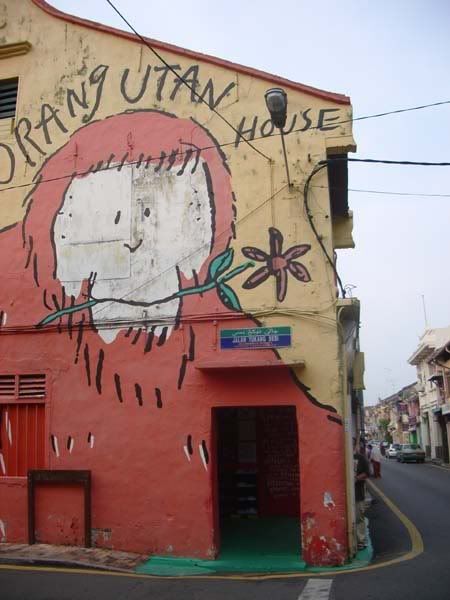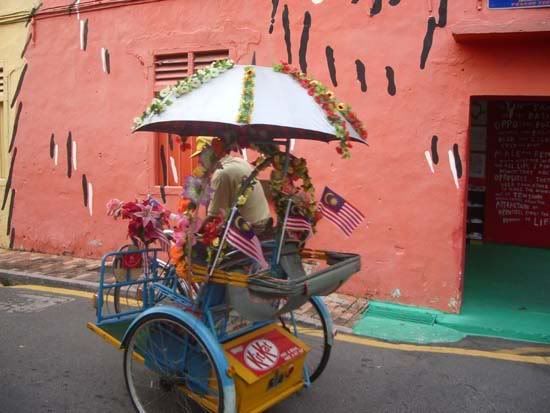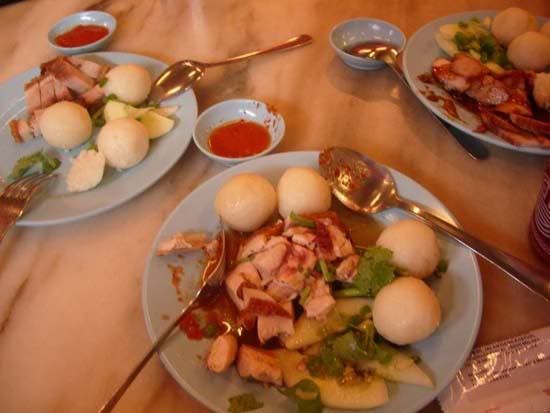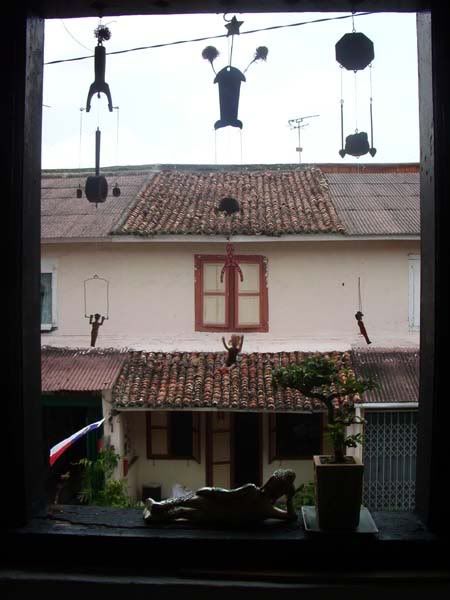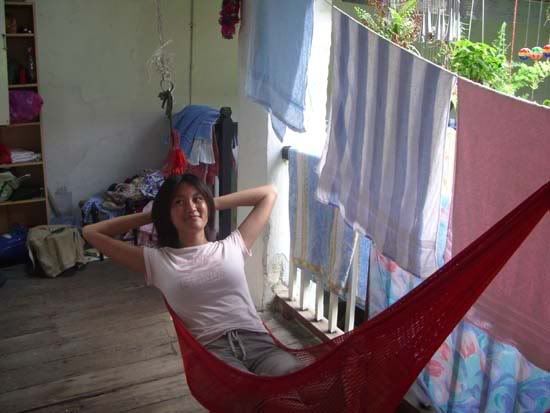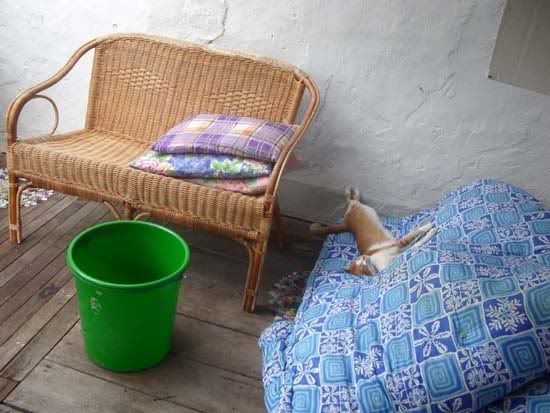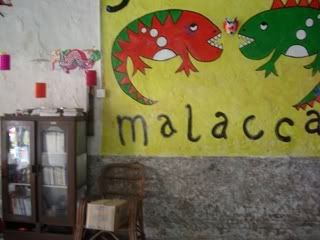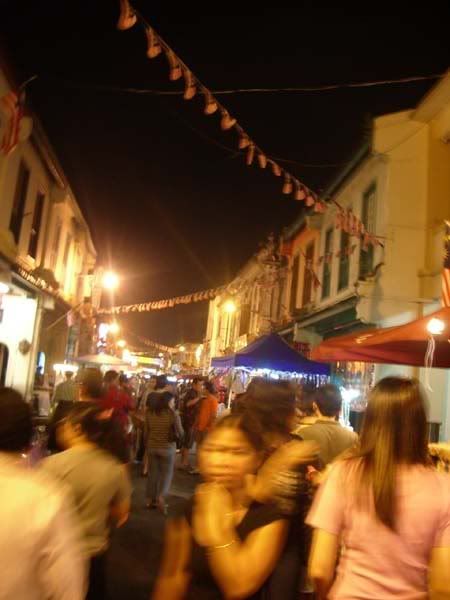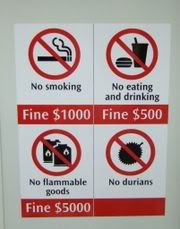Bughis.
Thanks to a very vital student card that mysteriously disappeared within the last two weeks, I had to leap through a series of very anal bureaucratic hoops to get it replaced in time to leave for Thailand for the recess week. (Yes, I know Thailand had that whole military coup dealio very recently, but it actually sounds more dangerous than it really is.)
Along with going to the police post to issue a missing student card report, receive a letter from the Registrar's office at the University and fill out an additional form, I wake up at six-thirty in the morning and haul my ass over to the Immigration office via train. Between issuing a request for replacement at eight o' clock in the morning at the Immigration office and being told to pick it up at approximately four o' clock in the same afternoon, I decide to kill time in Bughis, which is one MRT stop away.
Bughis prides itself as being one of the largest shopping hubs in Singapore, and it isn't hard to believe such a claim. In addition to high-end stores in sleek, airconditioned spaces, there are tightly-packed mazes of outdoor stalls that sell cute and trashy clothes, hokey souvenirs, poseur purses and a bajillion other things. It strikes to me as the Singaporean version of L.A's downtown fashion district, only bigger and with more fishballs. As far as I'm concerned, no bacon-wrapped hotdogs here.
It is crowded today, or maybe it always is on Friday afternoons, or maybe it is the fact that the mid-autumn Moon festival is going on and people are simultaneously feeling more superstitious and materialistic than usual. A big golden statue of a laughing Buddha sits in front of one of the antique stores; people clamor up to it to rub his fat belly and stroke his beaming cheeks before dropping coins into a slot above his belly button for charity and good karma. Right in midst of all the mass shopping blitz there is a Buddhist temple and a Hindu temple open to the general public for incense-burning and outdoor worship.
The Buddhist temple is packed (since Bughis, like the majority of Singapore, is mostly Chinese) so I walk over to the Hindu temple first, which is far less crowded. I take a long time looking at all the deities enshrined in flowers and candles, and I imagine the caretakers who lovingly decorate and cleanse these idols every day for the countless strangers who come in to pray. One of the men looking over the temple invites me over to stand in front of the main idol; he cups a metal bowl over my head for a moment, hands me some herbal leaves to chew on and gives me red powder to mark my forehead.
I head a few steps down to the Buddhist temple, which is crowded with people burning incense sticks, kneeling on the ground and reading prayers from dogeared prayer books. Somehow, I fight against the current of people to get my own three incense sticks so that I can offer my own prayers as well. Three is a standard lucky number for incense-stick burning, but there are people who have as many as ten. Young, old, rich, poor--it doesn't matter who you are and where you come from. Everyone is in here to pray, whether it is for good health, money, love or whatever else, and some people have tears in their eyes as they lower their heads in supplication.
When you are burning incense sticks, the very tips begin smoldering into ashes and sometimes they fall against your hands, leaving behind brief, fleeting impressions of pain.
I bow my head and start praying. I don't really make a regular habit out of praying, so maybe that's why I stand there for a long time. I'm not exactly religious in the sense of ascribing to any specific religion and my prayers aren't all that original; it's the standard wish for good fortune and good health for the important people in my life. I wonder what everyone else is praying for. Maybe it does make sense that there should be a religious temple right in the midst of a shopping district. It's more convenient that way.
I walk around for a while. There's a mid-autumn moon festival going on, and randomly, there are Peruvian street musicians who are drawing a bigger crowd than the elderly Chinese men with their traditional, three-stringed instruments. I imagine that the elderly Chinese men must be peeved by this. They are about eight feet apart from each other, so they create a really weird cacophony of sound.
Eventually, I go pick up my new student card, and it goes by far more smoothly than I expected.
I'm finally taking the train ride back home and at some point I catch a glimpse of my own reflection in the subway window. It isn't until then that I remember that this whole time I've been carrying the red mark on my forehead from the Hindu temple. It shines bright against my forehead like a small wound.
